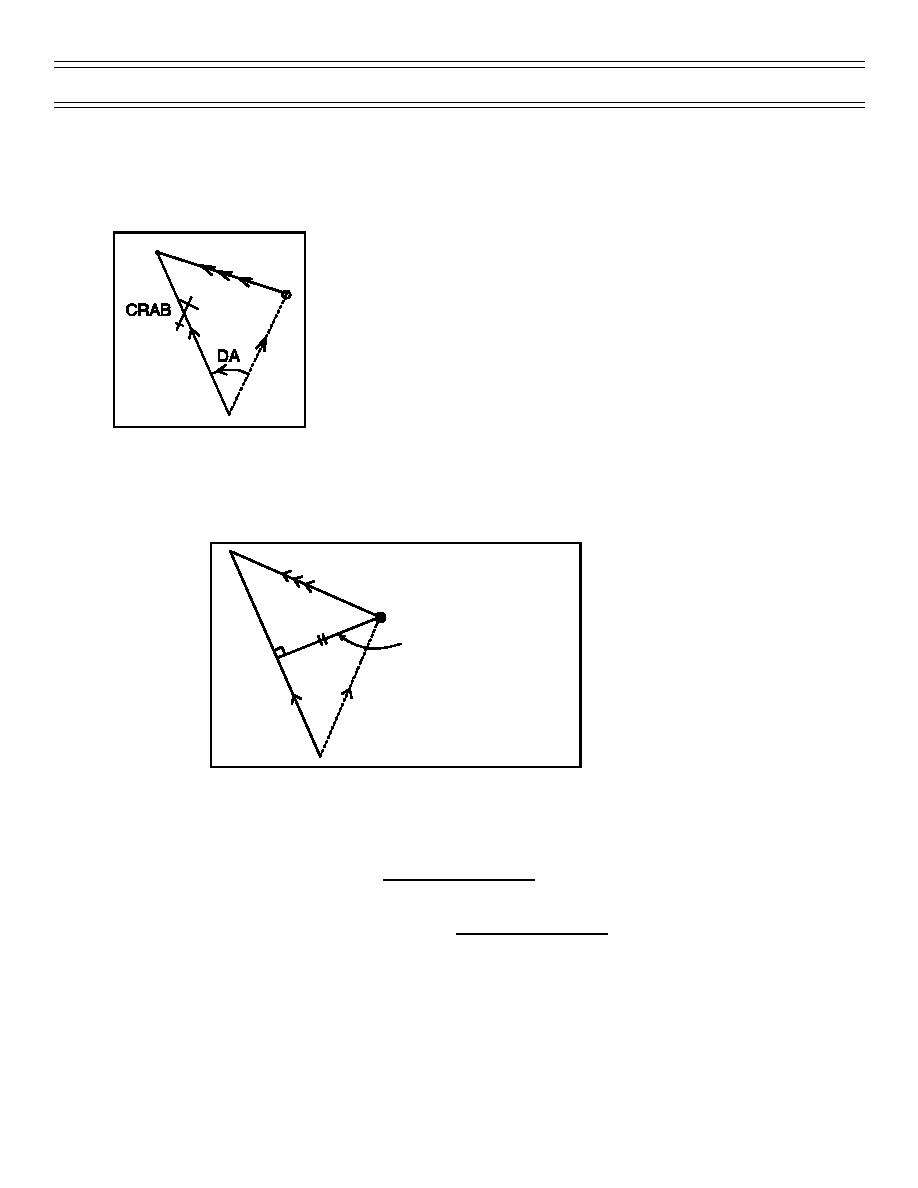 |
|||
|
|
|||
|
|
|||
| ||||||||||
|
|  T-45C TS INav-08
Fuel, Weather, and Alternate Airfield Planning
You will note that the ground and air vectors have a common point of origin and the angle between the
two, from TH/TAS to CUS/GS is the DRIFT ANGLE. The angle from CUS/GS to TH/TAS is CRAB
ANGLE.
As a side note: a course (CUS) is predicted path over the ground.
TRACK is your actual path over the ground.
Drift angle is important because it represents the angle at which the
aircraft will drift away from the desired course if you don't put any
correction into the wind.
The crab angle is the correction that must be used into the wind to
maintain a desired course. Crab angle corrects for drift angle.
Due to the limited size of the navigation computer, only a portion of the wind triangle is plotted on the wind
side as a graphic display. The rest is solved trigonometrically. Without going much into the higher
mathematics of the computer, what we are setting up is top part of the wind triangle on the grid face.
Crosswind component
By definition, the sine of an acute angle in the right triangle is equal to the side opposite the angle divided
by the hypotenuse (side opposite the right angle). Therefore:
SINE of the Drift Angle = Crosswind Component
True Air Speed
If we rearrange the equation:
True Air Speed =
Crosswind Component
Sine of the Drift Angle
The computer puts the crosswind component on the outside scale of the wind side, and the sine, which
you read as an angle, on the white middle scale which gives you the drift angle.
(2-02) Original
Page 8-13
|
|
Privacy Statement - Press Release - Copyright Information. - Contact Us |